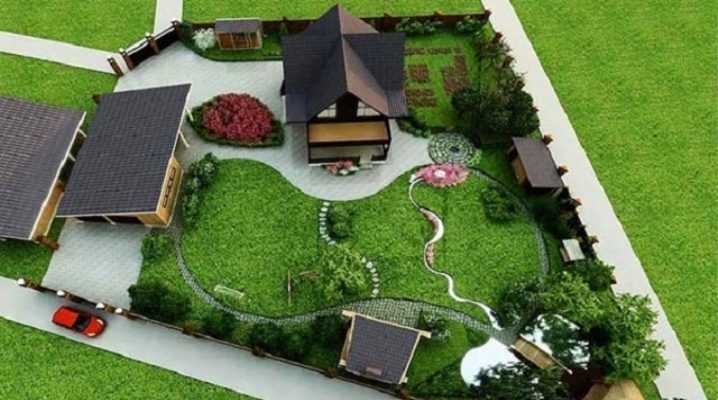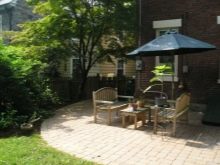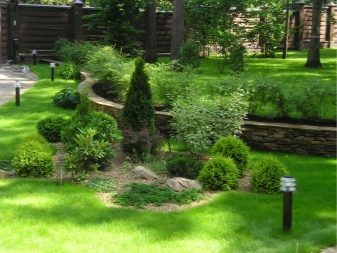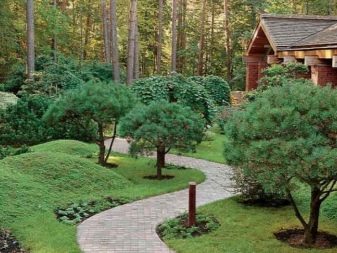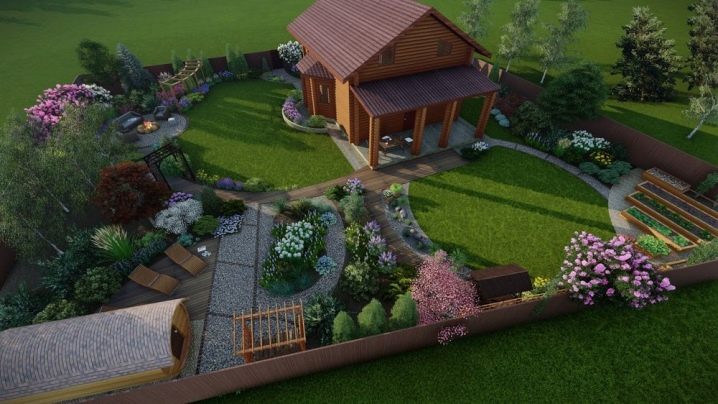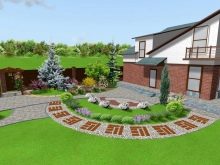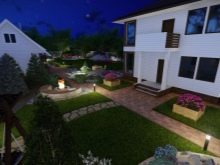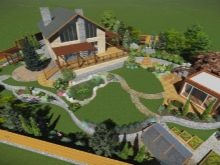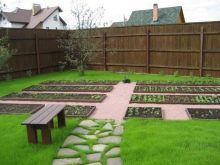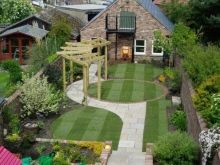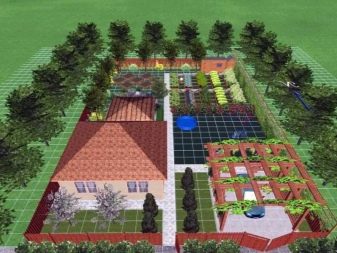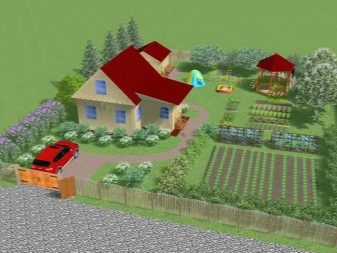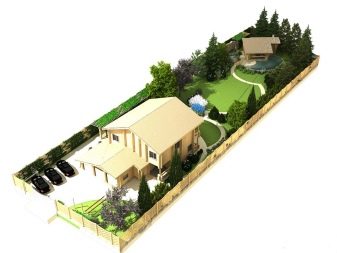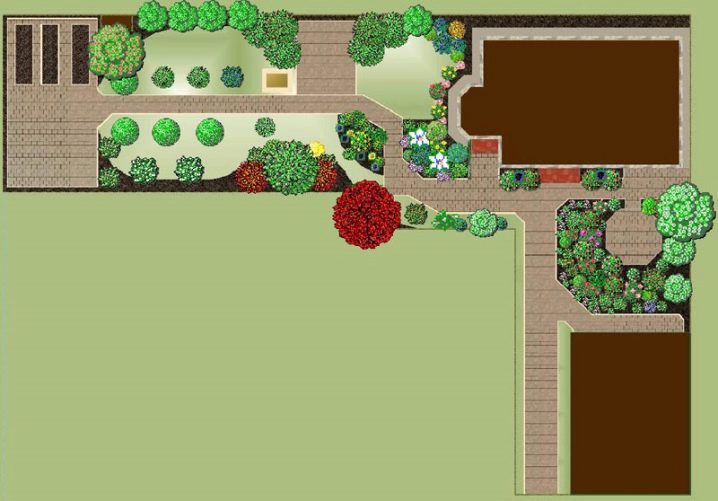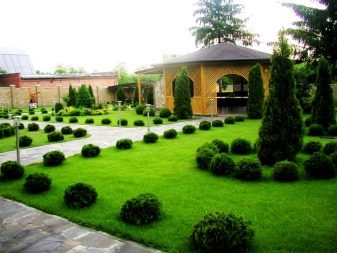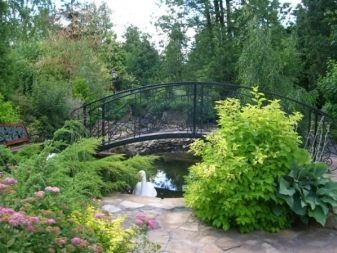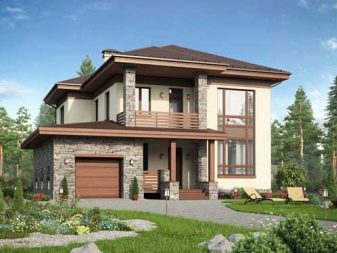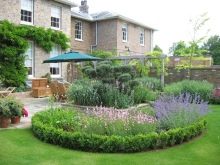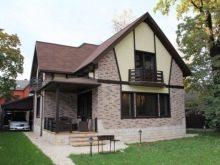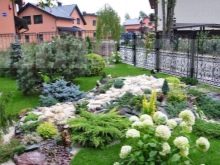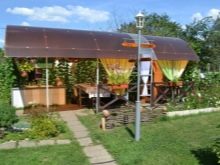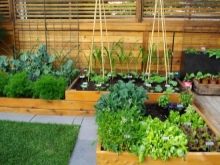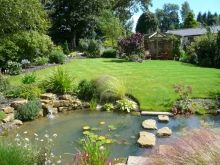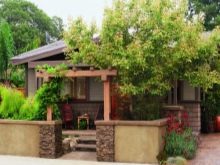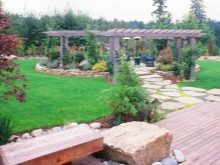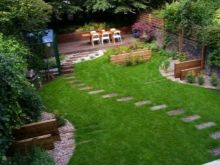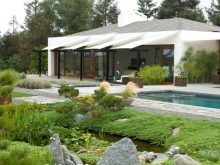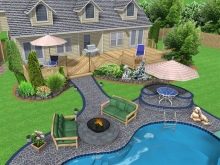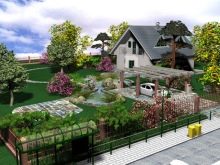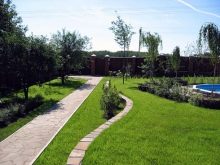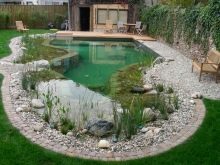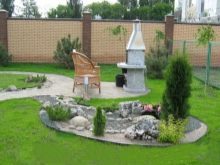Planning suburban area of 6 acres
Many of us are owners of small summer cottages, where we leave with our family in order to rest from the bustle of noisy cities. When we retire, we often spend most of our free time there. Therefore, it is so important, coming to the country to feel comfortable and enjoy working at your backyard.
Basic principles
With the right approach to planning, even a relatively small space of 6 acres can be arranged so that it is comfortable and convenient for all family members.
The first thing you have to do is split the entire area of land into four main zones:
- Residential complex (house or cottage).
- Commercial buildings (barn, garage, woodshed, etc.).
- Area of agricultural land (greenhouses, beds, fruit trees, flower beds, etc.).
- Place for relaxation in the open air (gazebo, swing, hammock, swimming pool).
As a rule, in the garden the most significant area is allocated for agricultural land, it can be up to 75% of the total allotment. But in general, everything depends on your preferences and goals for which the cottage is acquired: if you are going to just relax with your family here, then you should allocate more space for the recreation area.
But, no matter what your preferences, making an approximate plan of the infield, you should still follow the basic rules and generally accepted norms. In the future, this will help you avoid unpleasant situations.
The main thing to take care of:
- The first thing that should appear on your plan is a residential building. If you are going in your summer cottage to mainly engage in the cultivation of berries, vegetables and fruits, then it is advisable to determine a place to build a house near one of the borders of the plot. If your cottage will be used mainly for recreation, you can choose to build a house almost any place, most importantly,so that it looks harmoniously in the general landscape of the garden plot and does not block the sun for the plants and flowers that you plan to grow there.
- The most sunlit part of the site is desirable to leave under agricultural land, namely, under the planting of fruit trees and bushes with berries, the construction of greenhouses and the breakdown of flower beds.
- All economic structures are best placed in a secluded corner of your country house, so that they do not catch the eye and do not shade agricultural land. Ideally, these objects should be placed on the coldest and shady side, so they will help protect the area from the north wind.
- Recreation areas can be dispersed throughout or gathered together. For example, you can separate a playground with a pool and swings from a recreation area for older family members by building a cozy gazebo away from noisy kids in the cool shade.
Planning options
Depending on the form of land allotment, there are various ways of planning the estate plot.
Consider the main examples:
- The most popular and most successful is square or rectangular layout of the dacha. With such a project, it will be easy for you to draw up diagrams and divide the site into zones, orient it to the cardinal points, and then place all necessary buildings and landings on it. This type of layout is ideal for flat standard plots of 6 acres.
- Narrow layout used for non-standard, elongated land plots. This type of layout requires more elaboration. In order for such a site not to look like a fragmented space, it is very important to competently combine all its zones with certain connecting elements. These can be hedges, footpaths, all kinds of arches twined with plants - all these elements will play the role of dividing into separate zones and at the same time maintain a single line of overall design.
- L-shaped sections not too often found in gardening partnerships, but to ignore the layout of such a form would be wrong. If you got the land in this form, don’t be afraid, as the layout of such a plot is not as complicated as it may seem. On the contrary, this configuration has a number of advantages over even and standard forms: it is perfectly divided into zones.So, if you arrange a residential house in the projecting part of the plot, then you can create two completely separate territories, taking one of them for rest and the other for planting crops.
How to equip 6 acres?
Starting to draw up a plan for the development of a land plot of six acres, you should rely on your tastes and preferences, because it is up to the owner to be as comfortable and convenient as possible in his summer residence. Choosing a design style in which you will design the landscape, you need to draw on the sheet of drawing paper detailed zoning schemes for your future possession.
Careful planning can save you from annoying troubles in the process of reproducing objects on the ground.
For a breakdown of the territory you will need detailed information about your land plot:
- location relative to parts of the world;
- idea of the chemical composition of the soil;
- approximate location of groundwater.
All these data are necessary for the correct selection of the planting site, the construction of a well or a well, and the construction of an artificial reservoir.After determining the main functional areas, the places for the house, outbuildings and recreation areas are distributed.
If there are small children or elderly people in the family, then a place to rest in the open air should be allocated in the shady part of the plot. For young people with good health, who love to sunbathe, the recreation area, on the contrary, is organized on the south side, filled with the day sun.
It is also important to consider the location of economic objects. The most suitable place for such buildings is in the far corner of the site, away from the residential part and places of relaxation. There should be located and tanks for garbage, and compost heaps, and sheds with agricultural equipment and a toilet.
To disguise all these necessary, but not too aesthetic objects, you can use a hedge from living plants, in addition to its invaluable utilitarian functionality, it fits perfectly into the design of almost any landscape, being an elegant decoration.
Having decided on all the main zones, you can choose the places for laying out flower beds, building flower beds or simple lawns, where your family can play tennis or badminton.Flower beds can be broken along the fence that encloses your territory, near the door or under the windows of the house, as well as along garden paths filled with sand or fine gravel.
Flowers and decorative greenery for flower beds and flower beds should be chosen, depending on where they will be planted.
At the fence, you can plant more tall plants, and along the paths are very small. It is also a good idea to plant the plants so that during the whole season they bloom alternately, then your flower beds will look very beautiful, regardless of the season. We should not forget about the general line of design - all plants should be harmoniously combined with each other, creating a single whole in landscape design.
Tips for draining wet areas
Very often, cottage and garden plots are located on lands that are not very suitable for growing agricultural products, in most cases they are forest land in marshy lowland areas. The issue of draining such a dacha is one of the most pressing problems of landowners.
If the plot has a slight natural slope in the direction of the roadside groove, then this issue will not be difficult to solve.With this option, the location of the site, you just need to dig a small ditch for water flow parallel to the natural ditch (more often it is located behind a residential house).
The gutter will restrain the water gathering in the garden, and to drain the excess water from the entire territory, along the border of the entire plot of land, an additional groove is laid to drain the sewage into the natural moat.
If the summer cottage, on the contrary, has a natural slope in the direction opposite to the roadside flow, then it is necessary to lay a transverse groove from the front of the house throughout the territory of the land plot.
To drain areas with a completely flat surface, drainage drains are laid around the perimeter, approximately one meter deep and about half a meter wide. These trenches are densely filled with stones to the layer of natural vegetation, after which they are evenly covered with earth.
On how to plan a suburban area of 6 acres, see the following video.
